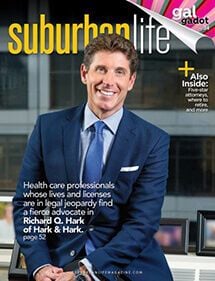Protecting The Rights Of Pharmacists In Professional Discipline Cases
What is a pharmacist’s “corresponding responsibility”? Corresponding responsibility requires pharmacists to refuse dispensing prescriptions to people they know or have reason to know that the presented prescription 1) is fake or illegal, 2) is written not based upon a valid medical reason, and 3) while properly secured is being consumed incorrectly or abusively. Pharmacists can lose their license for violating this corresponding responsibility!
The pain medication overdose epidemic stemming in part from properly secured medications dispensed to injured athletes of high school and college sports departments, and now society as a whole, has created huge pressure on state and federal authorities.
Their secondary response (aside from prosecuting the prescription-writing doctors) is to target the pharmacist and pharmacy dispensing the schedule II medication. Stripping pharmacists of their professional licenses (state and federal DEA dispensing authority) for violating their corresponding responsibility is the new battled ground in the war against drug addiction and dependence.
Federal and state prosecutors are bringing professional license disciplinary prosecutions against pharmacy owners and the pharmacists by claiming violations of their corresponding responsibility. Prosecutors seek to portray these pharmacists as mere conduits for bad doctors selling prescriptions.
In Danger of Losing Your Professional License?
Stop Searching. Start Calling.
24-Hour Professional License Hotline
1-877-4-HARK-LAW (1-877-442-7552)
The process begins when a doctor is charged with selling prescriptions. Either set up and targeted in a sting or simply being caught by Federal DEA investigators, these doctors are typically criminal charged federally and go to jail.
While the doctor’s license is emergently revoked during the pendency of their federal criminal prosecution, the DEA and the state pharmacy investigators turn their attention to the pharmacy which was filling (dispensing) that bad doctor’s prescriptions. Mandatory monthly regulatory compliance audits of the same pharmacies, which pharmaceutical suppliers and health insurance prescription plans must conduct, corroborate the specific pharmacists who were filing the fake, fraudulent, or abusive prescriptions.
21 CFR §1306.04, Purpose of issue of prescription, the Code of Federal Regulations, CFR) states:
(a) A prescription for a controlled substance to be effective must be issued for a legitimate medical purpose by an individual practitioner acting in the usual course of his professional practice. The responsibility for the proper prescribing and dispensing of controlled substances is upon the prescribing practitioner, but a corresponding responsibility rests with the pharmacist who fills the prescription. An order purporting to be a prescription issued not in the usual course of professional treatment or in legitimate and authorized research is not a prescription within the meaning and intent of section 309 of the Act (21 U.S.C. 829) and the person knowingly filling such a purported prescription, as well as the person issuing it, shall be subject to the penalties provided for violations of the provisions of law relating to controlled substances.
Pennsylvania’s Drug Act counterpart is 28 Pa. Code § 25.52, which states:
(a) A prescription for a controlled substance must be issued for a legitimate medical purpose by a licensed practitioner in the usual course of professional practice. The responsibility for proper prescribing of controlled substances is upon the practitioner but a corresponding responsibility rests with the pharmacist who dispenses the medication and interprets the directions of the prescriber to the patient.
(b) A prescription may not be issued by a practitioner to obtain controlled substances for use in his routine office practice nor for general dispensing to his patients.
(c) A prescription may not be issued for the dispensing of controlled substances listed in any schedule to a drug dependent person for the purpose of continuing his dependence upon such drugs, nor in the course of conducting an authorized clinical investigation in a narcotic dependency rehabilitation program.
Red Flags For Problematic Prescriptions
What are pharmacists to look for in fake or fraudulent prescriptions? A list of red flags that present to a pharmacist reasons not to fill a prescription include:
1) Some patients, in an effort to obtain additional amounts of legitimately prescribed drugs, alter the practitioner’s prescription, to secure high drug amounts by:
a) Providing a different call back number to verify the prescription,
b) Calling in their own prescriptions and give their own telephone number as a call-back for confirmation, and
c) Stealing legitimate prescription pads from practitioner’s offices and/or hospitals and prescriptions are written using fictitious patient names and addresses.
2) Suspicious activity includes any combination of:
a) Different handwriting
b) Different color ink in the prescription
c) Cross outs or incorrect spelling of patient, doctor, or drug name
d) Incorrectly dosing in strength and quantity of controlled substances
e) Patients showing up with prescriptions of other people
f) Incorrect, old, or wrong addresses and telephone numbers
g) Photocopied prescriptions
h) prescriptions that look “too good” or too legible
i) Quantities, directions, or dosages differ from usual medical usage
j) Prescriptions that do not possess correct standard abbreviations
k) Prescriptions that present with textbook presentations
l) Directions that are written in full with no abbreviations
3) Prescriptions not written for a valid medical condition often present as follows:
a) A prescriber writes significantly more prescriptions (or in larger quantities) compared to other practitioners in the area
b) Patients appear too frequently — not on a monthly basis
c) Antagonistic drugs, such as depressants and stimulants, being prescribed at the same time
d) A number of people appear simultaneously, or within a short time, all bearing similar prescriptions from the same physician
e) People who are not regular patrons or residents of the community, show up with prescriptions from the same physician
The manner and means of investigating what pharmacies and which pharmacists are failing perform their corresponding responsibility when dispensing schedule II prescriptions, for which doctors, patients, and drugs, is very easy.
Historical reviews of drug company delivery records to pharmacists are now being conducted on bimonthly. Drug manufacturers are routinely reporting to the state pharmacy boards, the DEA, and state attorney general narcotics enforcement officers when they encounter suspicious changes in the volume of orders for schedule II narcotic orders. Sometimes they even conduct their own investigations of the prescribing physicians in these cases.
Contact Hark And Hark Now For A Free Initial Consultation
If you are a pharmacist facing allegations that you breached your corresponding responsibility, please call me to discuss how to defend it. We can protect your federal and state DEA dispensing licenses.
Contact Hark and Hark online, or call 1-877-4-HARK-LAW (1-877-442-7552).
Reasonable rates. Payment plans. Major credit cards accepted.












